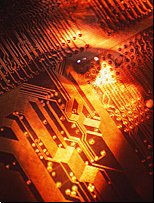ElectriPlast: Reader's Research Dispells Falsehoods...

Fact
vs.
Fallacy
By: An Anonymous
ElectriPlast Blog
(EB) Reader
While it may be frustrating for some to see that I let this engagement take place, the reality is--it's a public forum, and while it might at times take on a political Town Hall atmosphere, ladened with he-said/she-said heated discussions, or worse, with fallacies and falsehoods bantied about as though they were fact--when shown in the light of day (or reality), these utterances readily are seen for what they truly are.
Today, one of your fellow EB Readers decided to shine some light on recently shared fallacy, using a most uncommon tool "Researched FACT".
As a friend of mine often says when he sees it happen "Good Jaaab".
Rage-on Readers, I believe (and the general atmosphere from many sources agree) that the ship which sailed so, so long ago, is about to come in -- may we all profit hugely from its return and the long awaited bouty. PK sends...]
The following Reader's Comments were made to the EB article: "ElectriPlast: Is it Time to Appoint a Real Board of Directors" date/time-stamped: 12 November 2009, (01:24am & 01:26am)
Reader's Comments Challenge Fallacy
There have been a lot of people dissing the fact that batteries can be made from conductive plastic. Here is the real truth. Please read this:
http://www.osti.gov/accomplishments/macdiarmid.html
Here is part #1
Until 1987, the billions of batteries that had been marketed in myriad sizes and shapes all had one thing in common. To make electricity, they depended exclusively upon chemical reactions involving metal components of the battery. But today a revolutionary new type of battery is available commercially. It stores electricity in plastic.
Plastic batteries are the most radical innovation in commercial batteries since the dry cell was introduced in 1890. Plastic batteries offer higher capacity, higher voltage, and longer shelf-life than many competitive designs. Companies are testing new shapes and configurations, including flat batteries, that can be bent like cardboard. Researchers expect that the new technology will free electronic designers from many of the constraints imposed by metal batteries such as limited recharging cycles, high weight, and high cost.
The development of plastic batteries began with an accident. In the early 1970s, a graduate student in Japan was trying to repeat the synthesis of polyacetylene, a dark powder made by linking together the molecules of ordinary acetylene welding gas. After the chemical reaction took place, instead of a black powder, the student found a film coating the inside of his glass reaction vessel that looked much like aluminum foil. He later realized that he had inadvertently added much more than the recommended amount of catalyst to cause the acetylene molecules to link together.
News about the foil-like film reached Alan MacDiarmid of the University of Pennsylvania. He was interested in non-metallic electrical conductors. Since polyacetylene in its new guise looked so much like a metal, MacDiarmid speculated that it might be able to conduct electricity like a metal as well. MacDiarmid invited the student's instructor to join his team in the United States, and this collaboration soon led to further findings. The University of Pennsylvania investigators confirmed that polyacetylene exhibited surprisingly high electrical conductivity.
Scientists recognize that various materials can conduct electricity in different ways. In metals, electricity is simply the manifestation of the movement of free electrons that are not tightly bound to any single atom. In semiconductors, like those that make up transistors and other electronic devices, electricity is the drift of excess electrons to form a negative current or, alternatively, the drift of missing electrons or positive "holes" in the opposite direction to form a positive current. Typically, the excess electrons or the holes are donated by impurity or dopant atoms.
MacDiarmid's team reasoned that the ability of polyacetylene to conduct electricity was probably promoted by trace impurities contributed by the catalysts involved in the Japanese student's process. In their laboratory, MacDiarmid's team confirmed that it was possible to chemically dope polyacetylene to create either mobile excess electrons or holes. That these electrons and holes could move explained how polyacetylene was able to conduct electricity.
Here is part #2
When polyacetylene was exposed to traces of iodine or bromine vapor, the thin polymer film exhibited still higher electrical conductivity. The researchers discovered that by purposefully adding selected impurities to polyacetylene, its electrical conductivity could be made to range widely-behaving as an insulator, like glass, to a conductor, like metal. The discovery that plastics can behave like metallic conductors and semiconductors was a chemistry first.
The key breakthrough leading to practical application as batteries occurred in 1979 when one of Professor MacDiarmid's graduate students was investigating alternative ways for doping polyacetylene. He placed two strips of polyacetylene in a solution containing the doping ions and passed an electric current from strip to strip. As expected, the positive ions migrated to one strip and the negative ions to the other. But when the current source was removed, the charge remained stored in the polyacetylene polymer. This stored charge could then be discharged if an electrical load was connected between the two strips, just as in a conventional battery.
Chemically, the plastic battery is different from conventional metal-based rechargeable batteries in which material from one plate migrates to another plate and back in a reversible chemical reaction. In a conducting plastic battery, only the stored ions of the solution move-the plates are not consumed and reconstituted. Since conventional battery life is limited by the number of times the plates can be reconstituted, this difference portends a longer recharge-cycle lifetime for the plastic batteries.
One potential application for polymer batteries is in battery-powered automobiles. Two key measures of a battery's suitability for automotive application are the power density, which determines acceleration and hill-climbing ability, and the energy density, which determines the number of miles that can be driven between charges. Polyacetylene's power density is 12 times that of ordinary lead acid batteries. Its energy density is also higher-about 50 watts-hours per kilogram versus 35 for lead acid batteries. Although plastic batteries are competing against other advanced development batteries with similar capability for this application, they have the unique potential to be made of low-cost, environmentally-benign materials. Supporters feel that a polymer battery can be part of the battery-powered car of the future.
Polyacetylene, however, is not an ideal battery material. It degrades in air, is chemically stable only in liquid solutions, and is brittle and not amenable to injection molding methods used for forming plastic parts in production. The University of Pennsylvania team, along with industrial associates licensed to use their technology, searched for conducting polymers of greater structural strength, thermoplasticity, flexibility, and lower costs. Allied Corporation synthesized a new material, polyparaphenylene, a black powder capable of being formed into plates by hot pressing, that could be doped to conduct electricity. Several other potentially suitable plastics were discovered thereafter.
One such material was polyaniline. In 1984 and 1985, the University of Pennsylvania group received patents on the use of this material for rechargeable batteries. It is inexpensive, and, unlike polyacetylene, it is stable in both air and water. Polyaniline is the material used in the plastic batteries that first became commercially available in 1987.
In just 8 years, plastic batteries went from laboratory discovery to commercial availability, a remarkably fast evolution. With advances continuing at a rapid pace, there are great opportunities for increasingly important applications of this new technology.
Alan MacDiarmid shares the 2000 Nobel Prize in Chemistry with Alan J. Heeger of the University of California at Santa Barbara, and Hideki Shirakawa, University of Tsukuba, Japan," for the discovery and development of conductive polymers."
November 12, 2009 1:26 AM







